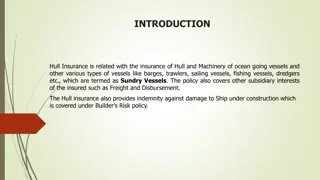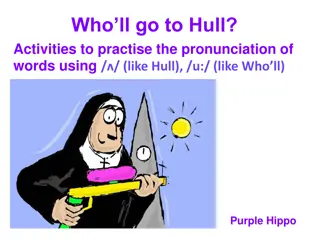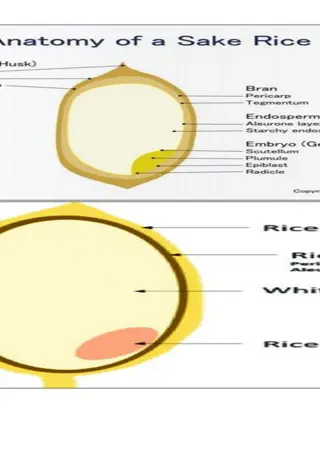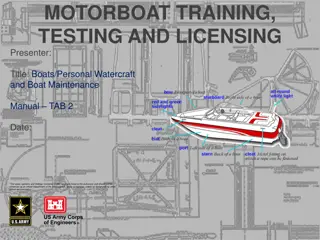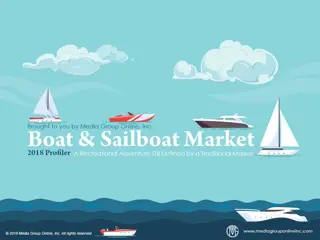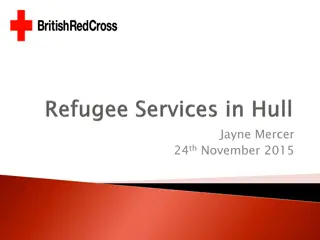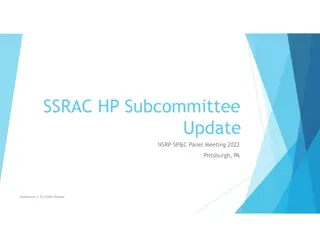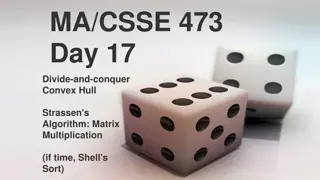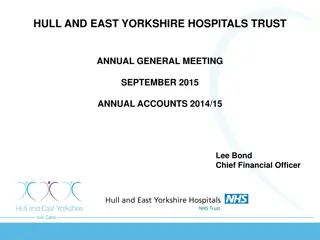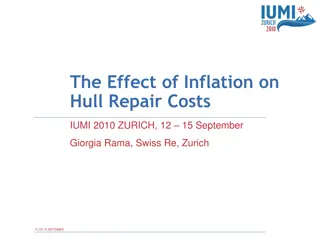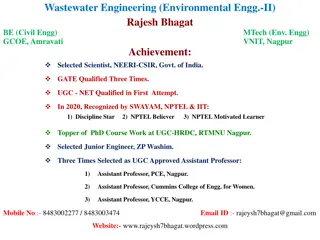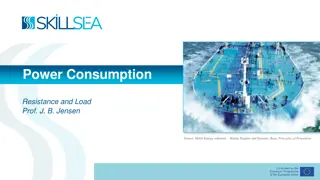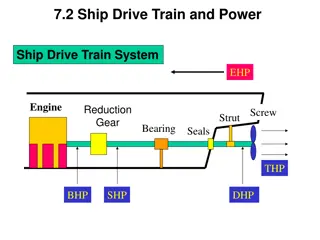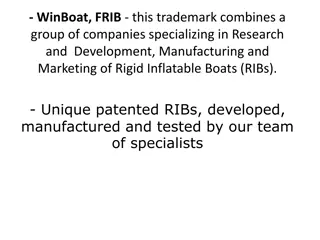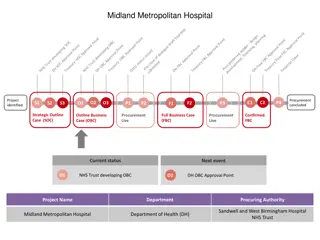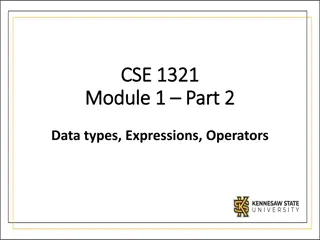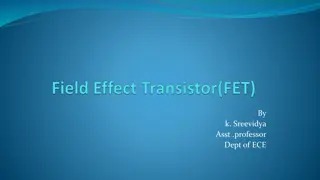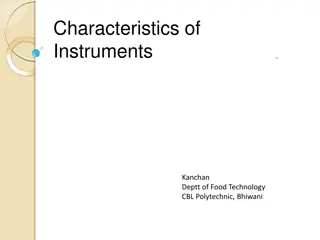Powerboat Hull Types and Characteristics Overview
This presentation covers the various types of powerboat hulls, including flat hulls, deep V hulls, cathedral hulls, soft-inflatable hulls, rigid-inflatable hulls, multi-hulls, and round bottom displacement hulls. Each hull type is described in terms of design, stability, speed performance, and suitability for different water conditions. Additionally, the presentation touches on parts of the boat and the basics of propellers. Detailed images accompany each hull type description for better understanding.
Download Presentation

Please find below an Image/Link to download the presentation.
The content on the website is provided AS IS for your information and personal use only. It may not be sold, licensed, or shared on other websites without obtaining consent from the author. Download presentation by click this link. If you encounter any issues during the download, it is possible that the publisher has removed the file from their server.
E N D
Presentation Transcript
US Powerboating Safe Powerboat Handling Classroom Session One Powerpoint 1 of 2
Hull Types & Characteristics Flat Hulls Easily get on a plane at high speeds Designed for calm, flat water Not very stable Excessive slide when maneuvering [SPR p.4]
Hull Types & Characteristics Deep V Similar to flat bottom, but designed to cut through water Good steering ability at high speeds Perform well in waves in speed; tend to roll at rest [SPR p.5]
Hull Types & Characteristics Cathedral Hull Two or three v-shapes forward, flat in back Good stability at rest and speed Rough in speed in waves Usually have lower freeboard [SPR p.5]
Hull Types & Characteristics Soft-Inflatable Hull [SPR p.5] Poor driving ability (excessive slide) High stability High load capacity Very wet ride
Hull Types & Characteristics Rigid-Inflatable Hull Rigid v-bottom High stability High load capacity Exceptional seaworthiness in rough weather [SPR p.4]
Hull Types & Characteristics Multi-Hulls Resist rolling Good steering ability at speed Large turning radius Shallow draft [SPR p.6]
Hull Types & Characteristics Round Bottom Displacement hull Glide through water efficiently Usually have keel or chine for stability Good load bearing capability [SPR p.4]
Parts of the Boat SPR p.11
Propellers How propellers work Thrust Rotation [right-screw most popular] Side force (prop walk) More noticeable in reverse esp. on fixed propeller Diameter Pitch Distance propeller would move in one revolution if turning in solid material ie 17 pitch propeller would move 17 inches Propeller size = diameter + pitch Smaller diameter + higher pitch used on high-speed boats Larger diameter + lower pitch used on slow-speed boats Stainless steel vs. Aluminum Linkage p.16 SPR p.8
Maneuvering Concepts Uncontrollable forces affecting a boat Wind p.44 Windage causes bow to fall off and boat to drift sideways Increased freeboard = increase windage effect Windage affects your turning arc Current Will move boat along as if on a conveyor belt Size, shape, etc. do not matter current effects all things equally SPR p.44
Maneuvering Concepts How Boats Turn Directed Thrust p.41 Outboards, stern drives and jet drives When a propeller is turned at an angle, its thrust is directed at an angle, which turns the boat If propeller is not rotating then no thrust, so no steerage Rudder p.41 Boats with a fixed propeller use a rudder to direct the flow of water Water flowing over the rudder creates lift (sideways force) and turns the boat No water flowing over the rudder = no steerage Pivot Point p.44 In forward, a boats pivot point is located 25% to 40% aft from the bow Always steer the pivot point along the path you want to steer! Where is the pivot point on a boat in reverse? SPR p.41, 44
Maneuvering Concepts Planing hulls behave like displacement hulls at low speed At a certain speed, the hull goes through a transition stage called semi-displacement as it climbs the face of its bow wave p.47 Once the boat moves over the top of its bow wave, it levels off and begins to plane Q: Where is the most optimum fuel consumption for a planing hull? SPR p.47
Safety Equipment: Lifejackets Type I Offshore Life jacket 22 lbs of buoyancy for adults / 11 lbs for children Will turn unconscious person face- up Type III Flotation Aid Buoyancy the same as Type II Will not turn unconscious person face-up Most common Type II Near-Shore Life Vest Min. of 15.5 lbs for adults / 11 lbs for children Will turn some unconscious people face-up Type IV Throwable Device Type V Special use Devices Inflatable vests, etc. No inherent buoyancy Must be worn! SPR p.83
Safety Equipment: Lifejackets Lifejackets Proper use of PFDs is integral! Should fit snugly but still allow movement If you can pull it up around your head on land, the same thing will happen in the water Any PFD with a tear or hole in it is no longer Coast Guard approved
Safety Equipment Federal Requirements for boats under 26ft One life jacket for each person on board. Must be readily available. Children under 13 MUST wear a lifejacket while underway (on any size vessel) unless below decks or in an enclosed cabin Over 16ft one Type IV throwable device Sound producing device p.85 Air horn, whistle, manual horn, etc. Fire extinguisher p.85 Under 26ft one B-I A combustible material (wood) B flammable liquids (gas) C electrical (wiring) D combustible metals (magnesium) Under 16ft - Visual distress signals if used at night p.84 16ft up MUST carry approved day/night visual distress signals SPR p.85
Safety Equipment Recommended Requirements Anchor + rode VHF Radio Knife First Aid Kit Spare parts / tool kit Oars Hand bilge pump Tow line / spare line
Registration Information Hull Identification Number Registration numbers and form Boat must be registered in its state of principal use or federally documented IL numbers must be displayed on each side of the bow in letters at least 3 high Registration must be aboard vessel at all times Max capacity plate Displays maximum weight and # of passengers (# of passengers takes precedence) Displays maximum horsepower engine (on outboard) Displays maximum weight capacity of all passengers, engine and gear Capacity equation: L x B / 15 SPR p.82
State Specific Information INSTRUCTORS: Use this section to include specific information for the state in which you will be teaching Safe Powerboat Handling. Examples: Marine Heads, Pollution Laws, Age of Operator, etc.


